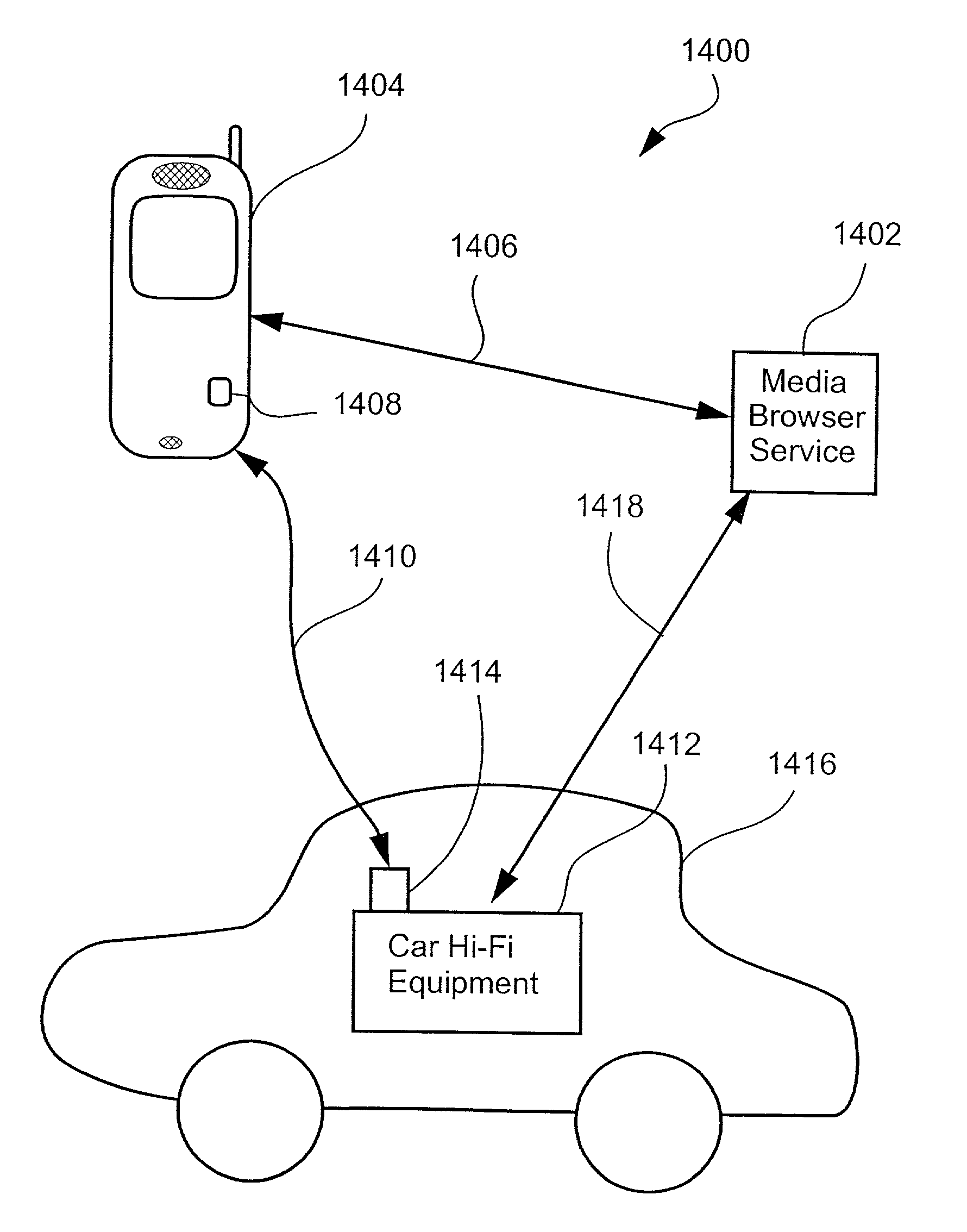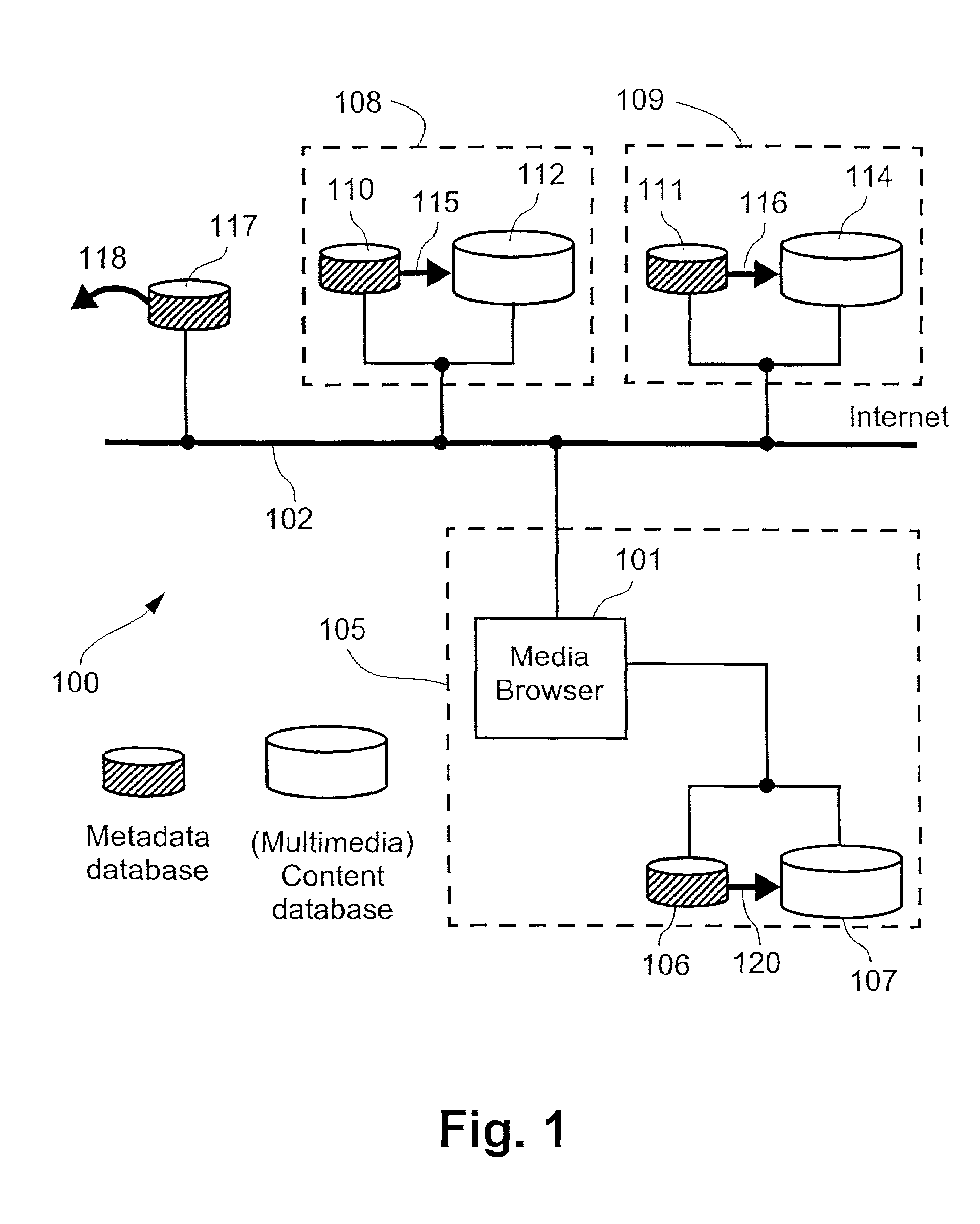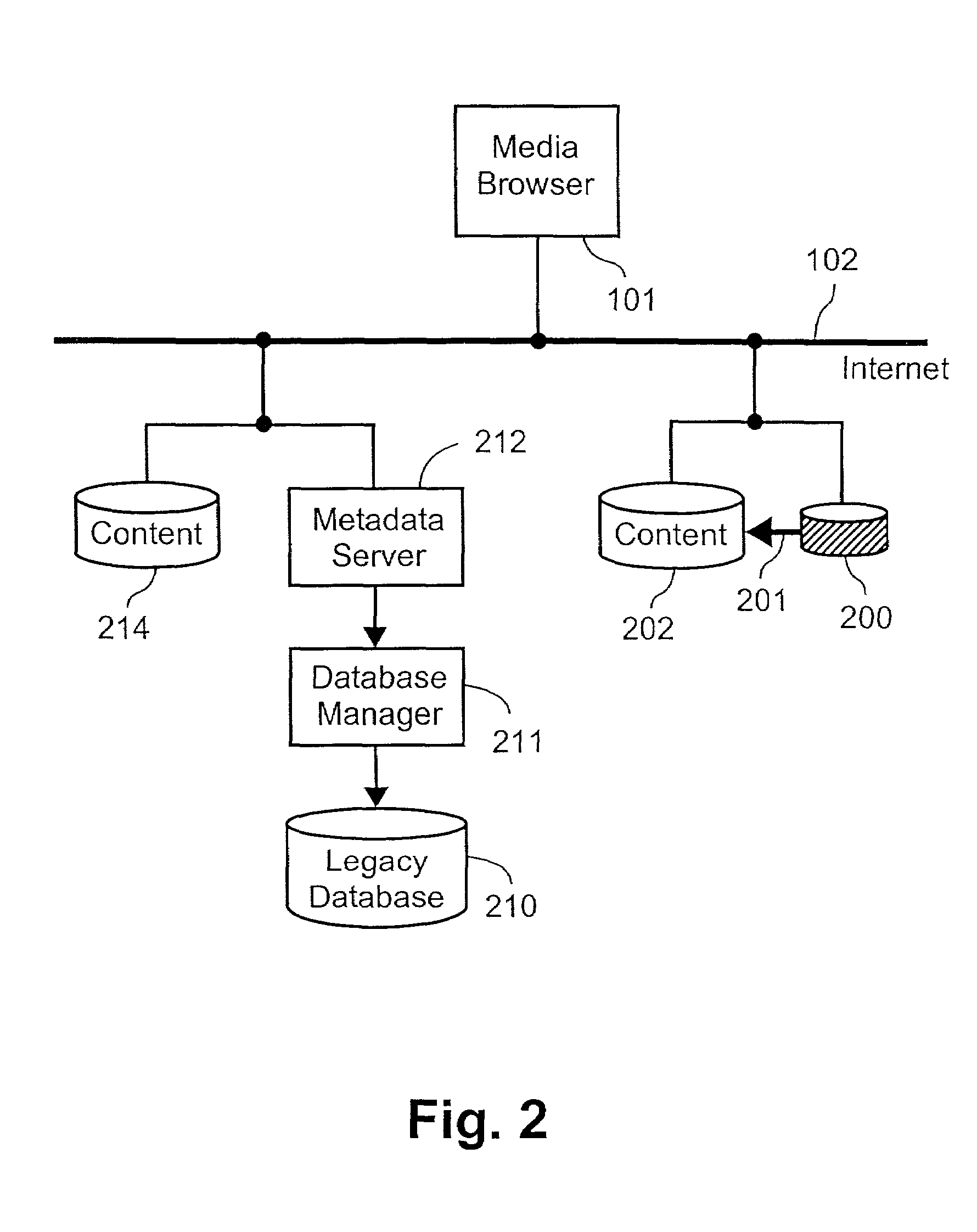Transferring a media browsing session from one device to a second device by transferring a session identifier and a session key to the second device
a media browsing and session technology, applied in the field of enabling access to electronically accessible multimedia content, can solve the problems of time-consuming and annoying actions, approach has its own problems, and multimedia content is not directly accessible to standard web search engines
- Summary
- Abstract
- Description
- Claims
- Application Information
AI Technical Summary
Problems solved by technology
Method used
Image
Examples
example a
[0084]
1.2. 3. 4. 5. 6. 7.8.9.10.11.12. 13. 14. 15. 16.17.18. 19. 20.21.22. 23. 24.
[0085]The attribute descriptorType is used to define whether a descriptor is to be treated as part of a Table of Contents (TOC descriptor), or as part of an index (index descriptor).
[0086]A TOC descriptor is used to describe the structure of a description, and is typically a complex descriptor. A TOC descriptor is navigable in the sense that such must contain a link within either its attributes or within the attributes of its children. The target of the link can be either a further description or an item of content. A TOC descriptor is similar to an entry in a table of contents of a book in that it enables a reader to go directly to a section of the work.
[0087]Index descriptors are typically leaf nodes of a hierarchically-composed descriptor structure and are often referred to as properties (ie. the type of descriptive information that is displayed using a properties dialog in a Microso...
example b
[0091]
1.2.3. xmlns = ‘http: / / www.w3.org / 2001 / XMLSchema’4. xmlns:xlink = ‘http: / / www.w3.org / 1999 / xlink’5. targetNamespace = ‘http: / / www.w3.org / 1999 / xlink’6. attributeFormDefault = ‘qualified’7. version = ‘1.0’>8.9. 10. 11. 12. 13. 14. 15. 16. 17. 18.19.20. 21. 22. 23. 24. 25. 26. 27.28.29. 30. 31. 32. 33. 34. 35.36.37.38.39.40.41.42.43.44.45.46.
[0092]A particular schema can use the core XLink and media browser attributes when declaring individual descriptors for a schema. In Example C below, the particular descriptors VideoClip, Date and Photographer are declared in a particular schema. Note that only a fragment of an actual schema is shown and reference to the media browser and XLink namespaces is assumed via the namespace prefixes mb and xlink, respectively. In XML Schema these namespace prefixes are assigned using the xmlns attribute of the XML Schema language. The media browser attributes are referenced unchanged from their definitions a...
example c
[0093]
1.2. 3. 4. 5. 6. 7. 8. 9. 10. 11. 12. 13. 14. 15. 16. 17. 18. 19. 20. 21. 22. 23. 24. 25. 26.
[0094]A description conforming to this particular schema fragment may contain the fragment of Example D:
PUM
 Login to View More
Login to View More Abstract
Description
Claims
Application Information
 Login to View More
Login to View More - R&D
- Intellectual Property
- Life Sciences
- Materials
- Tech Scout
- Unparalleled Data Quality
- Higher Quality Content
- 60% Fewer Hallucinations
Browse by: Latest US Patents, China's latest patents, Technical Efficacy Thesaurus, Application Domain, Technology Topic, Popular Technical Reports.
© 2025 PatSnap. All rights reserved.Legal|Privacy policy|Modern Slavery Act Transparency Statement|Sitemap|About US| Contact US: help@patsnap.com



